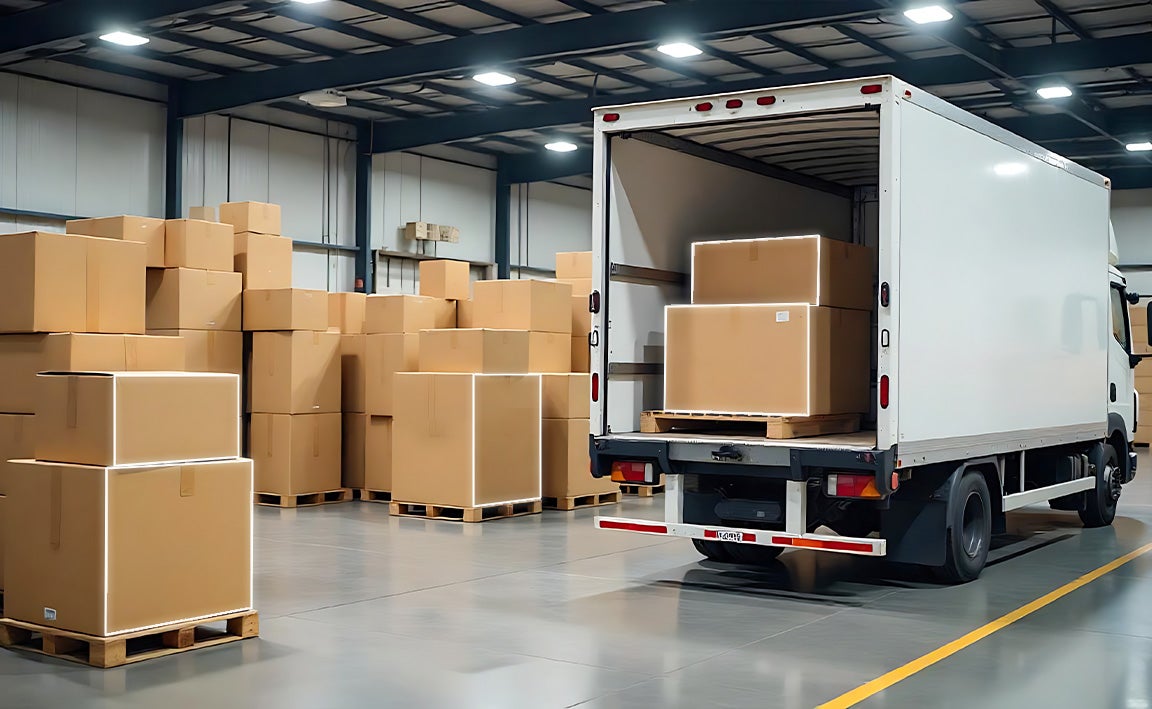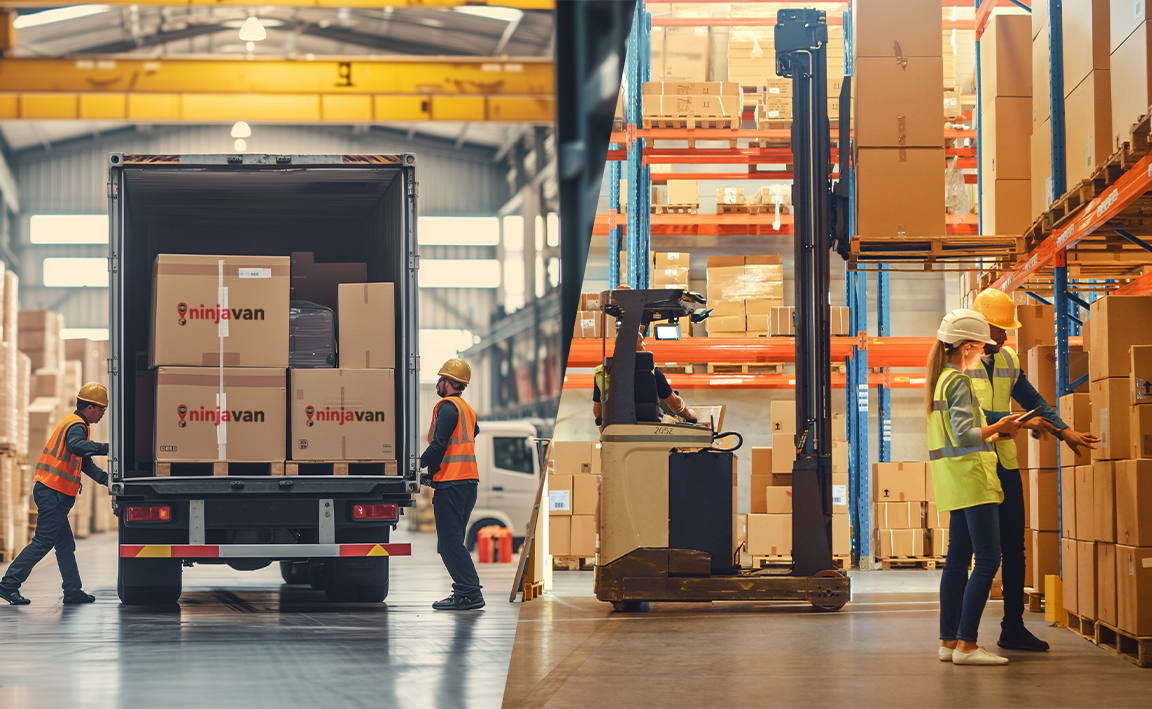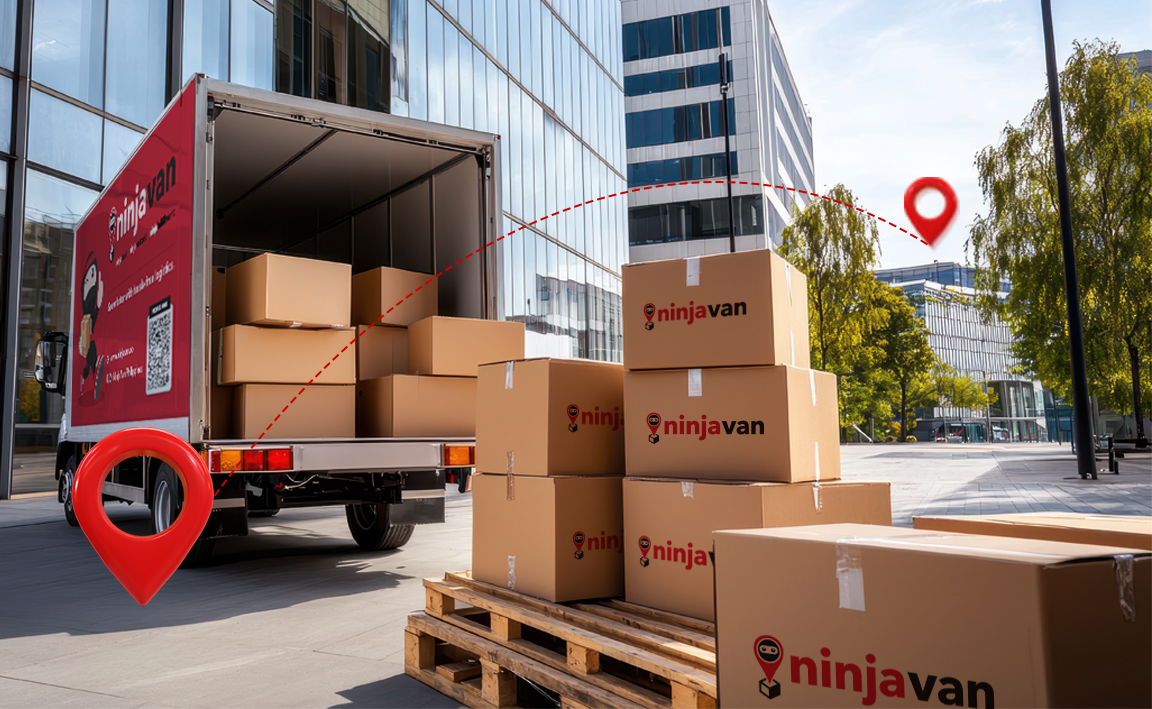How to Ship Bulky Items in the Philippines: What's the Best Shipping Option?

Not all packages fit neatly in a box, and when you're moving stock that takes up a significant amount of space, standard shipping won't suffice.
When you transport large volumes of inventory from the Greater Metro Manila Area to provincial stores or partner hubs, bulky shipping is a core function of smooth operations. Whether you're moving pallets of goods, racks of merchandise, or heavy consumables, getting them to the right place on time (and in good condition) is non-negotiable.
However, with oversized loads come oversized challenges: higher shipping costs, longer lead times, and special handling needs that exceed what standard couriers can manage.
This guide will teach you how to ship bulky items efficiently and cost-effectively across the Philippines. From key considerations to available shipping methods, you'll learn how to streamline deliveries and choose the right logistics partner to support your business.
Key Factors to Consider Before Choosing a Shipping Option
Large-item deliveries involve more than just moving packages from point A to B. Choosing the proper shipping method can affect everything from cost efficiency to delivery timelines and customer satisfaction. Before selecting a logistics partner or freight option, consider these key factors to avoid unexpected delays or budget overruns.
Size and weight
Bulky items are heavier and harder to store, load, and move. Couriers often base shipping rates on both actual and volumetric weight, which means oddly shaped or oversized packages may incur higher fees. For example, a compact treadmill from a sports and fitness retailer might weigh 40 kg but occupy space equivalent to a much larger item, thereby driving up delivery costs.
Most couriers worth their salt assess both physical and dimensional weight, helping you plan more accurately for cost and space. Once you know how these measurements affect pricing, you can adjust your packaging strategy to avoid unnecessary charges.
Delivery destination
Where your items are going will significantly influence your shipping decisions. Delivering from Metro Manila to major cities in Luzon may be straightforward, but reaching provincial areas or island destinations introduces new challenges, especially for large or fragile goods.
Suppose you ship nursery furniture from Metro Manila to a store in Davao. In that case, you need a logistics partner that can handle long-haul and inter-island routes and keep delicate, oversized items safe across multiple transit points.
Budget and urgency
One of the most common questions businesses ask is: How much does it cost to ship heavy items? The answer relies on various factors, including service speed, route, package dimensions, and handling needs.
For instance, a home improvement retailer might ship air conditioning units or power tools in bulk. If delivery is time-sensitive, such as during a seasonal promotion, they may opt for express service despite the higher cost. On the other hand, a music store replenishing a speaker system for multiple branches might opt for standard shipping to strike a balance between cost and delivery timelines.
Understanding your delivery priorities (i.e., speed versus cost) can help you select the most suitable shipping tier for each order type.
Handling and packaging requirements
Bulky shipments often require special handling and reinforced packaging to ensure safe transportation. A lifestyle or music brand shipping fragile instruments, or an automotive supplier delivering engine parts, must secure items in preparation for transit.
Look for shipping providers that offer priority handling services and employ trained personnel who can handle oversized or sensitive items with care. Dedicated support and parcel liability coverage can give you confidence that your inventory gets the care it needs every step of the way.
Ultimately, the proper shipping method should align with your product type, destination, and business goals. Considering these factors helps you streamline logistics and control costs, and ensure a smooth experience for both you and your customers.
Shipping Methods for Bulky Items in the Philippines

Standard parcel services cap at 150 lbs. So when you're shipping heavy or oversized stock, you'll need freight options. For bulky deliveries—common in industries like fitness, appliances, or automotive—that means choosing between Less-Than-Truckload (LTL), Full-Truckload (FTL), or Less-than-Container Load (LCL) shipping.
Each method has its strengths depending on the weight, volume, delivery route, and urgency of your shipment. Let's break them down.
Less-Than-Truckload (LTL)
LTL shipping is ideal when your cargo is too large for standard delivery but not enough to fill an entire truck. It's a cost-efficient option if you regularly ship medium-sized loads. For example, a sports and fitness brand restocking gym equipment in batches, or a baby and maternity care store distributing bulk orders of cribs and strollers, would benefit from this option.
With LTL, your shipment shares space with others headed in the same general direction. This option reduces cost while maintaining reasonable transit times. It's flexible, widely available, and suitable for regular deliveries to fixed points, such as retail outlets or provincial hubs.
Full-Truckload (FTL)
FTL is best suited when you have sufficient cargo to fill an entire truck or require dedicated transport for high-value or time-sensitive goods. An automotive distributor sending a full truck of tires and engine components, or a home appliance brand shipping refrigerators to provincial stores, would find this method reliable.
Since your cargo doesn't share space with other shipments, you benefit from faster transit times, reduced handling, and lower risk of damage. It's more expensive than LTL but can be more efficient for large, consolidated deliveries.
Less-than-Container Load (LCL)
When shipping bulky goods overseas but not enough for a full container, LCL is your best option. It's ideal for businesses such as pet supply companies importing inventory or lifestyle/music brands bringing in large instruments or accessories in smaller batches.
With LCL, your shipment shares a container space with others. While it's more cost-effective than a full container load, it comes with longer lead times and added touchpoints during consolidation and deconsolidation. LCL is better for planned, non-urgent international restocks.
| Shipping Method | Volume / Weight Range | Ideal Use Case | Transit Time | Cost | Flexibility | Security and Handling |
| On-demand Services (Parcel Delivery) | Less than 150 lbs | Small, urgent deliveries | Fast (same-day or next-day in urban areas) | Higher cost per unit | Very high (door-to-door, flexible scheduling) | Moderate (frequent handling, rider-based) |
| LTL | 150 lbs to 15,000 lbs | Mid-size shipments, e.g., gym equipment, cribs, or pet food | Moderate | Cost-effective for mid-sized shipments | High (shared truck space) | Moderate (shared handling)
|
| LCL | Small to medium palletized cargo under a 20ft container | International small-batch imports, e.g., baby gear, instruments | Longer (due to international customs and consolidation) | Lower than full container load, includes consolidation fees | High (shared container space) | Lower (more handling and repacking) |
| FTL | 15,000+ lbs or full truck capacity | Large, single-destination shipments; e.g., appliances or automotive supplies | Fastest (direct route) | Higher, but efficient for large consolidated loads | Low (dedicated truck) | High (fewer stops, dedicated space) |
Choosing the Right Courier or Freight Partner

Here's a simple guide to help you evaluate potential partners, along with an overview of how Ninja Van delivers on each critical front.
1. Reliability
A reliable partner delivers your shipments intact and on time, even during high-volume periods like end-of-season sales or holiday campaigns.
Ask:
- Do they have a proven track record with on-time deliveries for B2B shipments?
- Can they maintain consistency during peak seasons?
With Ninja Dash, you benefit from extensive nationwide coverage, ensuring that even your most remote delivery points are serviced without needing third-party handoffs. This level of coverage reduces delays, minimizes damage risk, and keeps your supply chain running smoothly.
2. Coverage
If your deliveries stretch from Metro Manila to provincial branches or warehouses, nationwide capability is essential.
Ask:
- Can the provider serve both urban centers and hard-to-reach areas?
- Do they offer end-to-end, door-to-door cargo services nationwide?
Ninja Van's strong fulfillment network and operational scale support consistent performance across Luzon, Visayas, and Mindanao. With dedicated account support, you also gain access to updates and logistics assistance, which is especially helpful when managing bulk restocks across multiple locations or coordinating urgent, bulky delivery runs under time pressure.
3. Speed and flexibility
Your delivery schedule may change from time to time. Sometimes, urgent restocking requests or business-critical deadlines arise with little notice.
Ask:
- Are same-day or express options available for oversized shipments?
- Can the partner scale quickly in response to sudden demand spikes?
Ninja Dash offers scalable solutions for B2B shipping models, featuring flexible scheduling, express delivery tiers, and support for both scheduled and on-demand dispatches. Ninja Van can adapt to your pace, even when your bulky delivery needs come in with little lead time.
4. Insurance and parcel liability
When shipping large or fragile items, insurance is more than a bonus; it's a safeguard.
Ask:
- What kind of parcel liability coverage do they offer?
- Is the claims process transparent and customer-friendly?
Ninja Dash lets you ship with confidence. Your deliveries come with clear coverage and careful handling. Support is also available for fast resolution if issues arise. These protections are crucial when transporting high-value, sensitive goods that are prone to damage.
5. Value-add considerations
Beyond core delivery functions, the best partners offer tools and support that simplify your operations.
Look for:
- Real-time tracking across all shipments
- Dashboard-level visibility into delivery progress
- Proactive updates from a dedicated account manager
Ninja Van integrates these features into its B2B delivery ecosystem. From a centralized dashboard to real-time shipment updates, these tools enhance your delivery execution, overall operational visibility, and efficiency.
Smart Shipping Starts With the Right Strategy

Shipping oversized stock shouldn't slow you down. With the right strategy and logistics partner, moving large items becomes less of a hassle and more of a competitive advantage.
Factoring in load size, delivery routes, urgency, and service capabilities enables you to streamline operations, minimize damage risks, and keep your supply chain running smoothly. Whether you're working with less than container load, full truckload, or anything in between, making wise choices leads to smoother outcomes.
Ninja Van's tailored solutions are designed to move with your business—fast, secure, and nationwide. With Ninja Dash, you get real-time visibility, reliable coverage, and scalable support for high-volume, high-stakes shipping.
Ready to rethink how you move your biggest inventory? Discover how Ninja Van can simplify large-scale delivery—without the growing pains.

